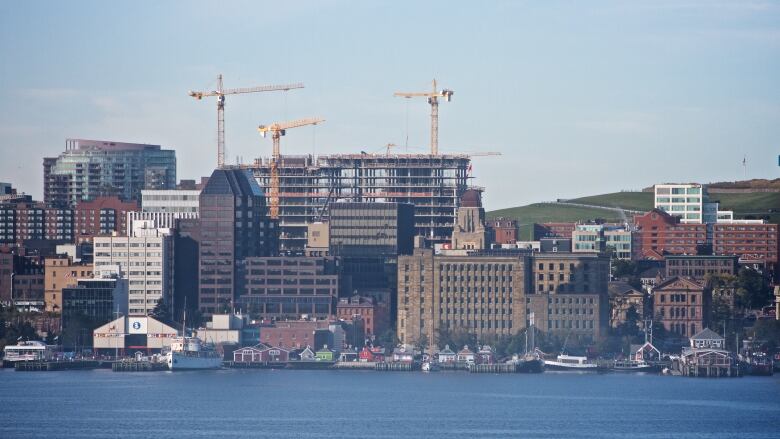Young people flocking to Nova Scotia as population reaches 1 million milestone
Thousands of people moved to the province from Ontario this year

The tides are changing in Nova Scotia more young people moved to the Maritime province this year than in recent memory as the total population surpassed one million people for the first time.
During the second quarter of this year, Nova Scotia saw the second-highest population gain in the country for interprovincial migration at 4,678 people, behind only British Columbia, according to Statistics Canada.
The statistics show the three largest age groups for interprovincial migrants were 20-24, 25-29 and 30-34 between the fourth quarters of 2020 and 2021.
Those age groups made up about 41 per cent of the people who moved to the province during that time frame.
Rebekah Young, director of fiscal and provincial economics at Scotiabank, called the figures "unprecedented."
Ontarian outflow
Although COVID-19 likely sped up people's plans to come to or return home to Nova Scotia, Youngsaid it's a trend that predates the pandemic, underpinned by the strength of the province'sgrowing economy.
"We saw people who were able to come and get jobs here," she said, adding that many have ties to the region, but others are drawn by the quality of life, and appear to be putting down roots.
"But we also saw things like work from home that enable people to come with their jobs."
The number of people who came to the province from Ontario was especially high 9,970 people between the fourth quarter of 2020 and 2021. Many even purchased homes without ever having seen them in person.
Honeidah Windross, 37, is one of those newcomers. Windross, her husband and their three-year-old daughter recently moved to the small rural community of Centre Burlington, N.S., from Brampton, Ont.
'I just feel like I belong'
Windross is originally from Mauritius, a small tropical island in the Indian Ocean. She said Nova Scotia reminds her of her home country, minus the snow.
"I just feel like I belong here and was meant to be here," said Windross in a recent phone interview.
"The people are so friendly. It's not like in the city where you don't even know your neighbours. Here, you see the same people all the time, so you get friendly,and they are helpful."
She said the affordability of real estate and living near the ocean were huge draws. Her husband who is originally from Newfoundland and Labrador also wanted a rural lifestyle.
"We are not much city people. We like our space. That's how we grew up and that's what we know," she said, adding she enjoys visiting the farmers' market and buying local products.
Windross said the company she and her husband both worked for in Ontario has an office in Halifax, and so they were able to transfer and keep their jobs.
Halifax growingat record pace
Nova Scotia's capital is also enjoying the largest growth in its 272-year-old history.
Between July 2020 and July 2021, the Halifax Regional Municipality was up 11,394 residents, bringing the total population to just under 460,000 residents.
Wendy Luther, president and CEO of the Halifax Partnership, said the city's quality of life and balance between urban, suburban and rural amenities is what's helping to draw more young people to the region.

But she said the challenge now is to make significant investments in housing, green transportation and infrastructure to bolster that growth and retain the people who have decided to move here, many of whom place great importance on sustainability.
Luther said her organization doesn't anticipate the trend to slow down.
"The people who are coming here, they're experiencing all that Halifax has to offer, and they're creating more opportunities for others and encouraging their friends and family to also consider Halifax," she said.
"It's Halifax's time right now."
The challenges ahead
Immigration had stalled for much of the pandemic, but is expected to further boost population growth as those pathways come back online.
It'salso touted as a main driverin the provincial Progressive Conservative government'splan to hit two million people by 2060.
But as the province grows, sotoodoes the strain on health care, education and housingall sectors that are experiencing their own set of challenges already.
That includes overcrowding in schools, wait-lists for family doctors and surgeries, and a provincewide housing crisis.
Labour, Skills and Immigration Minister Jill Balser said particularly when it comes to housing, part of the government's plan is to attract a skilled labour workforce to help build more housing stock.
"It's really important for young people in particular to hear that message, that there is work, we have a great quality of life, and we also want people to move here," said Balser.

She said recent changes to immigrationstreams will also help attract more health-care professionals, includingnurses, family physicians and continuing care assistants.
"If we bring people here to helpthat's exactly what we need right now," said Balser.
Meanwhile, Young said adapting to inflation including the rising cost of housing will also be a challenge in the days ahead.
"Overall, it's a net positive because of the larger tax base, but how quickly can the system catch up to the population growth?" she said.
"It really comes down to the role of policymakers in managing that transition."












_(720p).jpg)


 OFFICIAL HD MUSIC VIDEO.jpg)
.jpg)



























































































